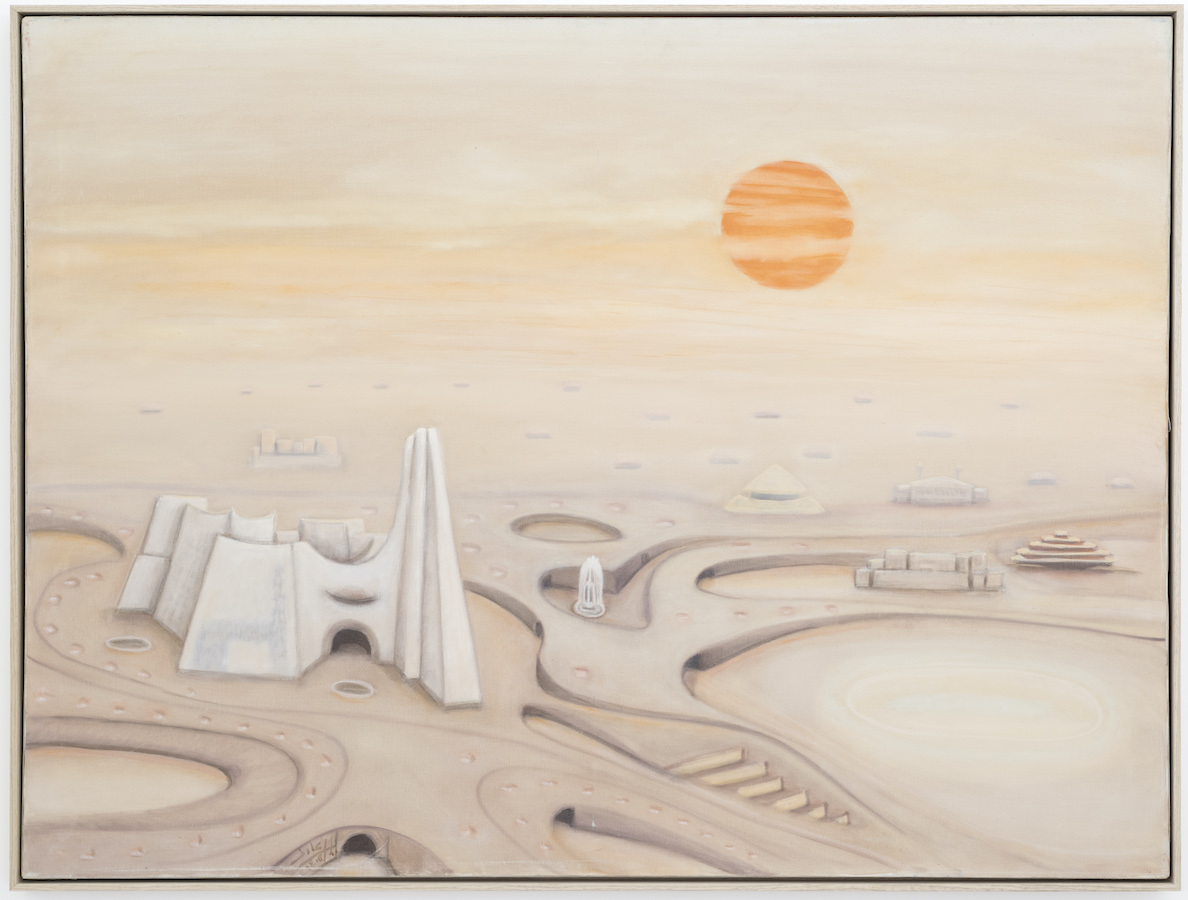Life Style: French model Cindy Bruna shows off footwear by Arab designer

Lebanese painter Aref El-Rayess’ daughter pays tribute to her late father in retrospective exhibition
DUBAI: For Hala El-Rayess, the moment had finally come. For years, she had tried to organize a comprehensive exhibition paying tribute to her late father, the prolific Lebanese modernist Aref El-Rayess, who died in 2005. And in late 2021, such a show was held at Beirut’s Sfeir-Semler Gallery, displaying the artist’s diverse body of work; including paintings, sculptures and collages.
“I remember walking in at the opening and standing there looking at the artworks. Tears just started running down my face. . . it was very emotional,” El-Rayess, the founder of the Aref El-Rayess Foundation, tells Arab News from her base in London. The exhibition, featuring works from five decades of her father’s artistry, has now travelled to the United Arab Emirates and is being hosted by the Sharjah Art Museum, in collaboration with Sharjah Art Foundation, until August 7.
“Seeing it in Sharjah — at an institution, not a gallery — was a very happy moment for me. ‘I’ve done it, after all these years,’” says El Rayess. “And the space is so beautiful and complements the work so well.”
She remembers a childhood perfumed by turpentine in her playful father’s atelier in Saudi Arabia in the Eighties. “I’d walk in and the smell was so strong, I think I was around five or six then. It brings back warm memories of happy childhood days. One of the things that used to drive my mum crazy was that she’d shower me, get me all dressed up, and ready to go out, then she’d find me covering myself in paint, from top to bottom. That was my dad — just letting me play,” she says.
But beneath the jokester persona lay a deeply political artist, whose work reflected troubled times in the Arab world in the second half of the 20th century.

“He was extremely vocal. Like his works, he wouldn’t keep anything in and he never really cared about what people thought — not out of disrespect; he would try to get reactions out of them, purposely. Reactions were what he was always after. Some people hated him,” says El-Rayess with a laugh.
Aref’s father hoped his son would turn to the world of business, but he was drawn instead to nature and creativity. The living room of the El-Rayess family home in the city of Aley on Mount Lebanon was lined with Aref’s paintings, his daughter recalls. “I think art was just something he had within him,” she says.
As he grew older, Aref became politically active and joined Lebanese politician Kamal Jumblatt’s Progressive Socialist Party, founded in 1949. In Beirut’s artistic circle, he was a focal presence, befriending the likes of Helen Khal, Huguette Caland, and Etel Adnan.

Aref was a witness to major political events in the region from the 1950s onwards, starting with the Algerian War of Independence to turmoil in Palestine and the Lebanese Civil War. At one point during the latter, he fled to Algeria as there was talk of him being a target of an assassination plot.
“I think he was becoming a bit too active,” says El-Rayess. “They just wanted to kill him and my grandad was like: ‘Get out. I need to save my son.’”
His dystopian, darkly comic, surrealist paintings depict scenes of war, hanged resistance fighters, a politician with a distorted face, and a mother crying in shock as she holds her deceased son. “He was definitely trying to record a moment in history. It was always about what was happening in the (moment),” observes El-Rayess.

There is a lighter side to the artist’s work too, such as his beautiful portraits of African men and women, created during his travels in West Africa, where his father had a business. Later in his career, he experimented with making large, show-stopping collage panels made up of hundreds of newspaper clippings of major headlines, prominent politicians and stars of the 1990s, from Rafic Hariri to Princess Diana. As with his paintings, he was capturing a moment in time.
“People would tell him that he was wasting time and that this wasn’t ‘art.’ It was his way of taking a break from painting,” says El-Rayess.
Another departure from his war-heavy paintings came about in the 1980s, during his time in Jeddah, when he created his calming, out-of-this-world “Desert” series, painting with ethereal hues.
This marked a new chapter in his life, during which he assisted Mayor Mohammed Said Farsi’s plans to build Jeddah’s sculpture park.
“I personally think that the fact he left Lebanon to become a provider, a father, was a completely different world for him,” says El-Rayess. “Being in a place where there was desert, calmness, having his own little girl. . . I think that brought some kind of peace into his soul.”
Noting that the news was copied from another site and all rights reserved to the original source.
xnxx,
xvideos,
porn,
porn,
xnxx,
Phim sex,
mp3 download,
sex 4K,
Straka Pga,
gay teen porn,
Hentai haven,
free Hentai,
xnxx,
xvideos,
porn,
porn,
xnxx,
Phim sex,
mp3 download,
sex 4K,
Straka Pga,
gay teen porn,
Hentai haven,
free Hentai,



